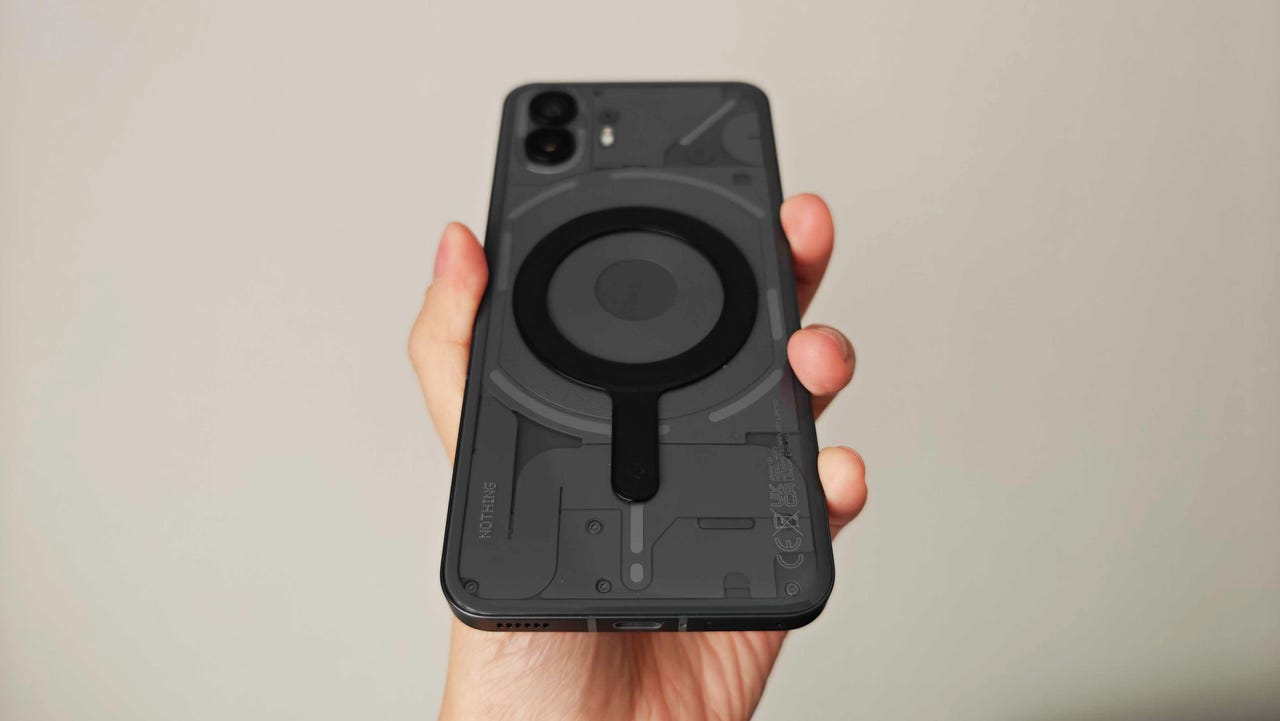'ZDNET Recommends': What exactly does it mean?
ZDNET's recommendations are based on many hours of testing, research, and comparison shopping. We gather data from the best available sources, including vendor and retailer listings as well as other relevant and independent reviews sites. And we pore over customer reviews to find out what matters to real people who already own and use the products and services we’re assessing.
When you click through from our site to a retailer and buy a product or service, we may earn affiliate commissions. This helps support our work, but does not affect what we cover or how, and it does not affect the price you pay. Neither ZDNET nor the author are compensated for these independent reviews. Indeed, we follow strict guidelines that ensure our editorial content is never influenced by advertisers.
ZDNET's editorial team writes on behalf of you, our reader. Our goal is to deliver the most accurate information and the most knowledgeable advice possible in order to help you make smarter buying decisions on tech gear and a wide array of products and services. Our editors thoroughly review and fact-check every article to ensure that our content meets the highest standards. If we have made an error or published misleading information, we will correct or clarify the article. If you see inaccuracies in our content, please report the mistake via this form.
How to add MagSafe to your Android phone (and why you'll love it)

ZDNET's key takeaways
- Magnetic ring plates made by Spigen, ESR, and other accessory brands give Android devices and older iPhones MagSafe compatibility.
- They're relatively affordable, ranging from $5 to $17, and allow you to mount your device onto virtually any MagSafe accessory, including car mounts, tripods, charging stands, and more.
- Attaching the ring plate doesn't give your phone wireless charging if the device doesn't have it to begin with, and the mounting process can be difficult on phones with bulkier camera bumps.
Ever since Apple introduced MagSafe, a magnet-based mounting system that allows the iPhone to latch onto various stands and accessories, my Android-loving self has been green with envy.
The lack of the feature, no matter what Android phone I've switched to, left me always wanting more -- wishing that someday, I, too, can just plop my phone on the MagSafe car mount that my partner typically uses during her commutes.
Also: Apple to bring RCS to iPhones next year. Google's response will make you chuckle
That reality is coming soon, thanks to Qi2 and the folks at the Wireless Power Consortium, but "soon" is not "now." In the meantime, I've found the quick fix: Magnetic ring plates, and it's a cheaper solution than you think.
View at AmazonA magnetic ring plate, in a way, is the literal definition of MagSafe. By mounting it onto the back of your phone, the device can snap onto other magnetic stands and accessories, ensuring the most optimal placement for your viewing and charging pleasure. (Because if there's one issue plaguing traditional wireless chargers, it's the fact that as soon as you move your phone a bit to the left or right, the misaligned charging coil weakens the power delivery.
Also: I've tested dozens of MagSafe wallets on my iPhone, and this is one you should buy
I discovered Spigen's interpretation as I was curating ZDNET's previous list of the best weird tech deals during the holiday season, and the $17 add-on has since become a mainstay in my daily carry.
Applying the mount is made easy thanks to an installation guide. Pictured below, it has a cut-out to lay over your phone's rear camera bump, ensuring the proper adhesion of the ring. Sure, you'll find cheaper ring plates on Amazon, but most of them don't come with this guide frame, and eyeballing the installation is not ideal.
Once the mount is centered, lifting the frame reveals your new MagSafe-compatible Android phone.
The mounting kit should work with just about every smartphone, including the wide camera bar on the more recent Google Pixel phones. However, there was one anomaly in my testing; I just couldn't get the frame to fit around the OnePlus Open's camera bump. That thing is huge.
Using smartphones without a case is one of the more risky life decisions I've made, but Spigen actually recommends applying the MagSafe mount on your phone case instead. The adhesion just sticks better to the plastic/TPU texture of a case versus the glossy/satin finish of phones, and I can attest to that.
Also: Is this the ultimate wireless car charger? My iPhone tells me yes
In fact, one of the issues that I've found with using the magnetic ring directly on a phone is when they're mounted onto a car vent and the heat is on. The warm air can weaken the adhesive, causing the ring to loosen from the glass backing of the phone. By then, all it takes is a bump in the road to give your phone an impromptu drop test.
There's one other callout that's been reported by Samsung Galaxy S22 Ultra and S23 Ultra users: Using the magnetic ring may interfere with the S Pen's functionality, ranging from latency issues and general connectivity. So I'd advise against getting one if you own either device.
ZDNET's buying advice
Otherwise, I've been very satisfied with the added functionality a simple $17 accessory has given to my phone. To be able to prop my Android onto wireless charging docks, car mounts, and other "iPhone-exclusive" accessories feels like the most guilt-ridden thing to do, but the loophole works, and it's now become my pocket pick for a last-minute gift recommendation.
